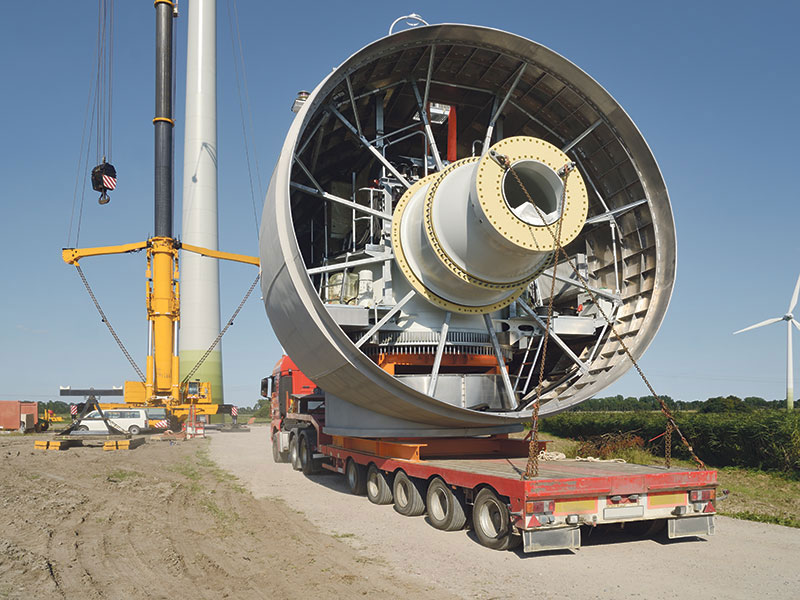
This article appears in the April 2022 issue of Investment Executive. Subscribe to the print edition, read the digital edition or read the articles online.
Responsible investors generally agree on the goal of carbon reduction, but the methods for addressing that goal in an investment strategy can vary.
This can understandably be confusing for investors, acknowledged John Cook, senior vice-president, portfolio manager and investor engagement team co-lead with the Greenchip Team at Toronto-based Mackenzie Investments.
Cook draws a distinction between ESG investing, which focuses on each company’s environment, social and governance policies; and environmental thematic investing, whereby investors put their money into renewable energy, energy efficiency, clean technologies and sustainable agriculture companies.
Environmental thematic investing often gets referred to in the media, incorrectly, as ESG investing, Cook said.
Institutional investors that employ an ESG strategy may be investing in oil producers but may “demand to see the company’s ESG policy and demand that there is an offset, or that there is a target carbon-neutral policy with a specific date,” said Ilana Schonwetter, investment advisor with BlueShore Financial in North Vancouver, B.C.
Saurabh Suryavanshi, portfolio manager with Dixon Mitchell Investment Counsel in Vancouver, believes in an engagement strategy over an exclusion strategy. “The world is not going to stop producing oil just because you don’t [invest in] one of the producers,” he said. “[Through] engagement, the executives of the companies can be encouraged for setting a strategy and target to reach carbon neutrality and adoption of ESG-linked executive compensation metrics.”
When institutional investors that use an ESG strategy (as opposed to an environmental thematic strategy) invest in oilsands producers, Cook said, those investors look at various issuers and determine which of them has the best ESG score. For example, Company A might use less energy, produce lower emissions, use less water and have a more diverse board when compared with Company B.
Schonwetter emphasized the influence shareholders can have on the decisions made by corporate executives. “Shareholder engagement, in my opinion, has had a very significant positive impact in demanding that oil and gas companies restore or minimize the environmental impact of what they are doing and how they are doing it,” she said.
Conor Chell, a lawyer with MLT Aikins LLP in Calgary, agrees. “What most investors are looking at is [an issuer’s] decarbonization plan — whether that involves changing the asset mix, changing its operations [or] things like carbon capture,” Chell said.
In particular, investors are asking for details about an issuer’s “net zero” plan (a goal whereby greenhouse gases [GHG] added to the atmosphere minus GHG removed equals zero), Chell said: “What investors are looking for are achievable net-zero plans with actual milestones.”
ESG investors also want to know if the executives at energy firms are being paid to reach GHG emissions targets. “The behaviour of the executives will change if they have part of their compensation linked to those targets,” Suryavanshi said, adding that 50% of the oilsands producers in Canada link executive compensation to ESG metrics.
So, can your clients invest responsibly if they are still buying shares in energy firms? The answer is “not as binary as people would want it to be,” said Marie-Justine Labelle, head of responsible investment (RI) with Desjardins Investments Inc. in Montreal. “It’s a very difficult question.”
Labelle suggested examining “the company’s willingness to change their business model to be compatible with the Paris Agreement, [making] sure it is backed up with clear business plans to do so, [and checking whether] the capital expenditure plan of the business is aligned with the goals they’re talking about publicly.”
(The Paris Agreement, which took effect in 2016, requires signatories to reduce global GHG emissions to limit the global temperature increase in this century to 2°C.)
With some Desjardins Investments funds, RI means excluding producers and specialized transporters of fossil fuels, as well as companies in the civilian firearms, nuclear energy and tobacco industries.
Desjardins’ SocieTerra family of funds “excludes fossil-fuel companies on the basis that our members and clients who invest in that line felt that [investing in fossil fuels] was incompatible with their convictions and with key thematics like climate change,” Labelle said.
In the SocieTerra Environment Fund, for example, the top five holdings, as of the end of February, were: Microsoft Corp.; Mastercard Inc.; Linde PLC, an industrial gas manufacturer based in Ireland; Thermo Fisher Scientific Inc., a biotech vendor based in Massachusetts; and IQVIA Holdings Inc., a life sciences IT vendor based in North Carolina. In the Desjardins SocieTerra Canadian Equity Fund, the top five holdings, as of the end of February, were big banks and Toronto-based Brookfield Asset Management Inc.
Mackenzie Greenchip invests thematically in industries such as renewable energy. But this might mean a client’s money is invested in a firm that produces significant carbon emissions when compared with a financial services firm, for example.
“A four- to six-megawatt wind turbine has about 250 tons of materials, mostly steel and concrete, and concrete produces lots of emissions when you make it,” Cook said. Solar energy production is similar because “the main ingredient in solar is polysilicon, which is basically crushed quartz.”
“If you are a low-carbon investor, you actually steer capital away from [wind and solar electricity] solutions,” Cook said. “That’s the strange thing.”
But environmental thematic investing aims for lower carbon emissions over the long term rather than avoiding investments in renewable energy simply because manufacturing parts for wind turbines and solar panels is carbon-intensive.
When comparing two funds, an RI investor might intuitively choose the one showing lower carbon emissions, Cook said. But the higher-carbon fund might invest in renewable energy and be “doing a better job getting us to a more sustainable future” — making the latter fund a better fit for a thematic portfolio.
Some fund companies with smaller lineups, however, “pick whichever [fund] is most convenient for them and call it ‘sustainable,’” Cook said. “Or even worse, ‘ESG.’”